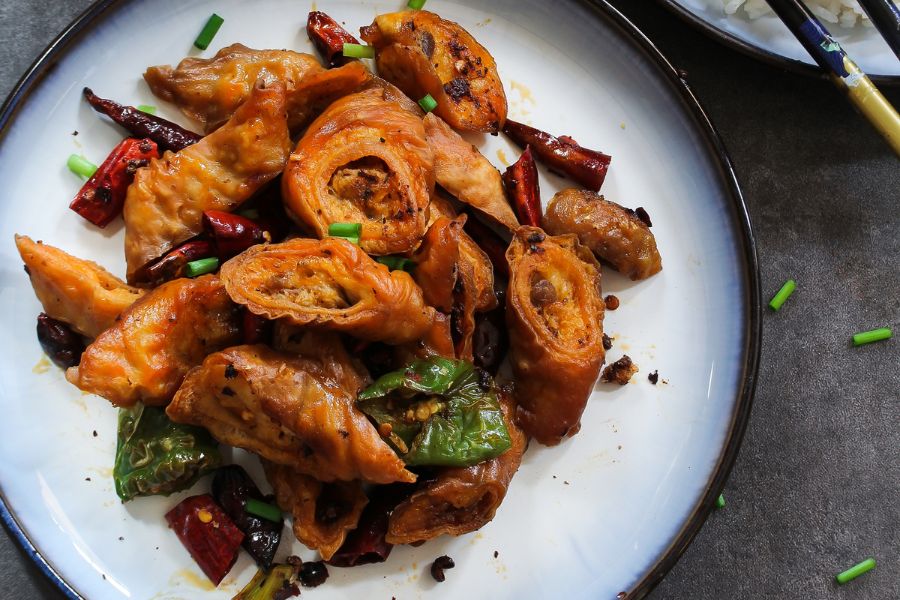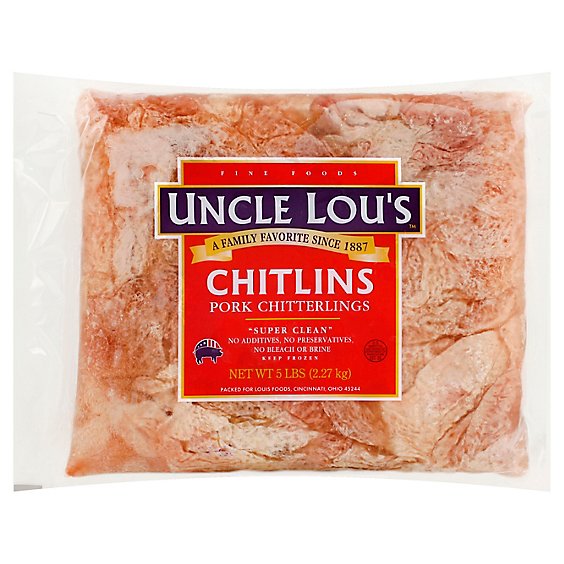Pork bung is a unique food item that is popular in many parts of the world, including East and Southeast Asia. It is a part of a pig’s large intestine, specifically the section through which feces are expelled. In the West, it is commonly used as a sausage casing due to its size, while in other parts of the world, it is a popular street food.
When you purchase pork bung, it typically comes in tubes that are two to three feet long. While it may seem strange to eat a part of the pig that is used for waste expulsion, the taste is surprisingly meaty and porky. Some describe it as having an “offal-y” flavor, which is characteristic of many innards.
Although it may sound similar, pork bung is not the same as chitlins, which are made from the small intestines of pigs. While both can be cooked and prepared in a variety of ways, including boiled, fried, or stuffed, they have distinct differences in taste and texture.
One popular way to prepare pork bung is to boil it in water for several hours util it becomes tender. It can then be sliced and served with a dipping sauce or added to soups and stews. Another popular preparation method is to grill or fry the pork bung until it is crispy and golden brown. It can be served as a snack or added to other dishes for added flavor and texture.
While pork bung may not be for everyone, it is a unique food item that is worth trying at least once. Its meaty and porky flavor, combined with its chewy texture, makes it a favorite in many parts of the world. Whether you are looking to expand your culinary horizons or simply looking for a new snack to try, pork bung is definitely worth considering.
What Is A Pork Bung?
A pork bung is a part of the digestive system of a pig, specifically the rectum and large intestine. It is commonly used as a casing for large sausages in Western cuisine. In East and Southeast Asian cuisine, it is a popular street food. The pork bung is cleaned and prepared befre being stuffed with a variety of ingredients such as ground pork, vegetables, and spices. It is then cooked by deep-frying or boiling and served as a snack or part of a meal. The use of pork bung as a food ingredient varies across cultures and regions, but it remains a unique and versatile part of the pig’s anatomy.

What Does Pork Bung Taste Like?
Pork bung, which refers to the large intestine of a pig, has a meaty and porky taste that is distinct from other cuts of pork. The flavor of pork bung is often described as “offal-y” due to its animalistic and gamey taste. This taste can vary depending on the preparation method, but the overall flavor profile remains similar. The texture of pork bung is also unique, with a slightly chewy and tender mouthfeel. In Asian markets, pork bung is commonly sold and used in various dishes, including soups, stews, and stir-fries.
What Is Pork Bung Made Of?
Pork bung is made of the large intestine of a pig, specifically the portion through which feces passes out of the body. This part of the intestine is cleaned, processed, and formed into tubes that are approximately two to three feet in length. Pork bung is also known as pig rectum and is commonly used in various food preparations like sausages, hot dogs, and other processed meat products. It is important to note that pork bung should be properly cleaned and cooked before consumption to ensure food safety.
What Is The Difference Between Pork Bung And Chitterlings?
Pork bung and chitterlings are two differet types of pork offal that are commonly used in cooking. Pork bung is made from the large intestine of the pig, while chitterlings are made from the small intestine.
Here are some key differences between the two:
– Size: Pork bung is typically larger than chitterlings, as it comes from the large intestine.
– Texture: Pork bung is thicker and tougher than chitterlings, which are thin and delicate.
– Flavor: Pork bung has a milder flavor than chitterlings, which can be quite pungent and earthy.
– Preparation: Both pork bung and chitterlings require a lot of cleaning and preparation before cooking, but chitterlings are generally considered more difficult to work with due to their smaller size and delicate texture.
– Cooking methods: Both pork bung and chitterlings can be boiled, fried, or stuffed, but chitterlings are more commonly fried or boiled, while pork bung is often stuffed and cooked in the oven.
While both pork bung and chitterlings are pork offal that can be used in a variety of dishes, there are some notable differences in terms of size, texture, flavor, and preparation that set them apart from each other.

Conclusion
Pork bung, also known as pig rectum, is a popular ingredient in various cuisines around the world. It is commonly used as a sausage casing in the Western world, while in East and Southeast Asia, it is a popular street food. Despite its origins, pork bung has a meaty and porky taste that can be enhanced through various cooking methods such as boiling, frying, or stuffing. Although it is often confused with chitlins, which are made from the small intestines of pigs, pork bung is made from the larger intestines. pork bung is a unique and flavorful ingredient that sould be explored by adventurous eaters.
